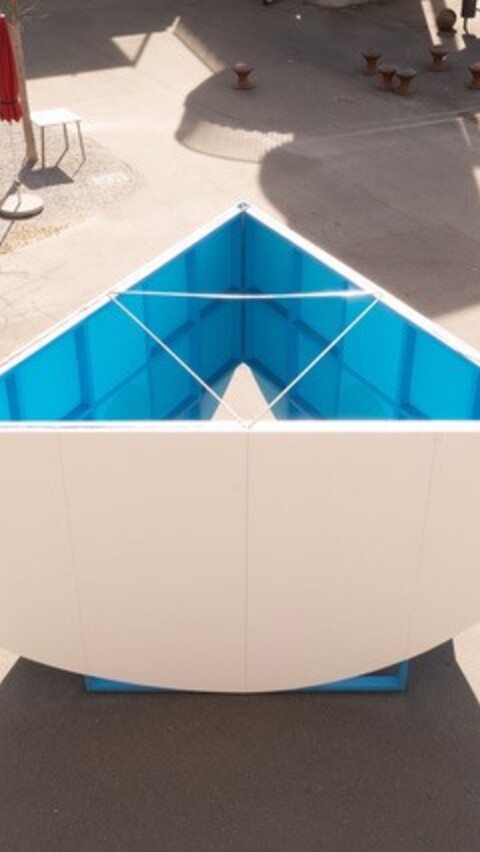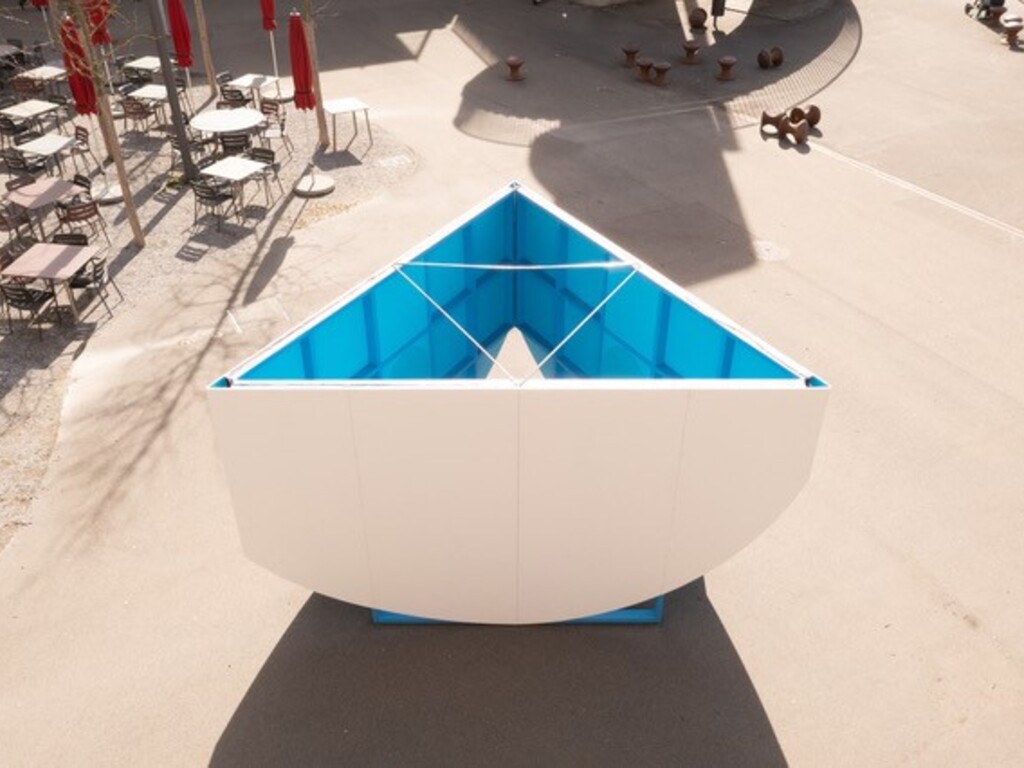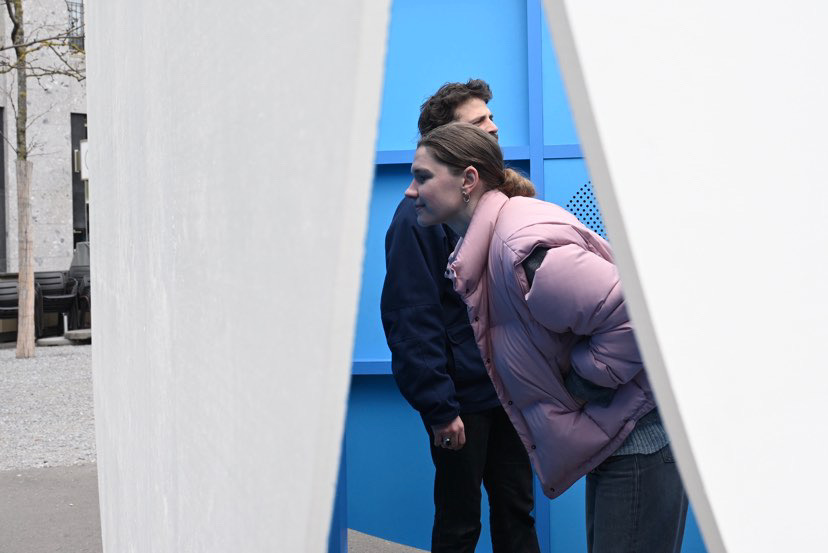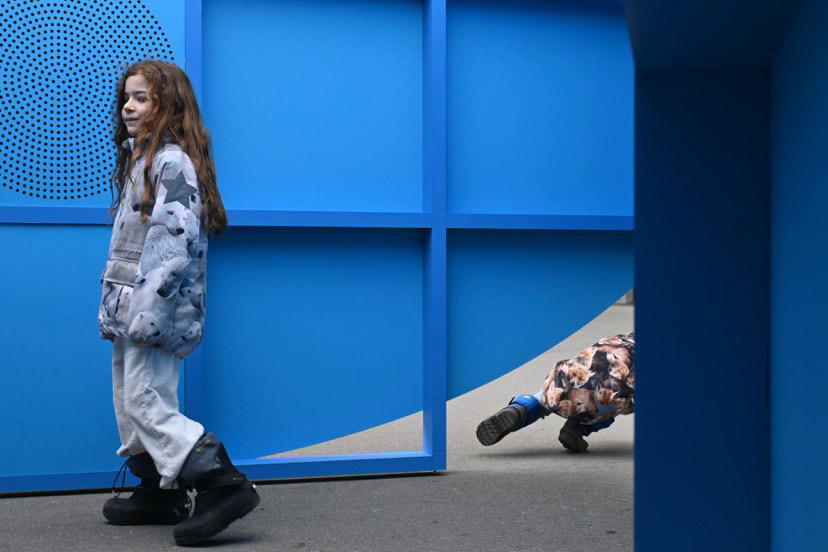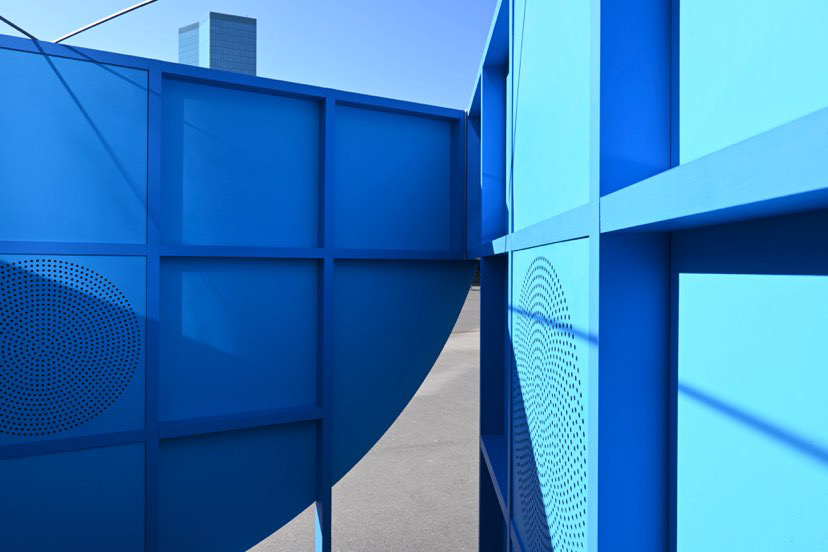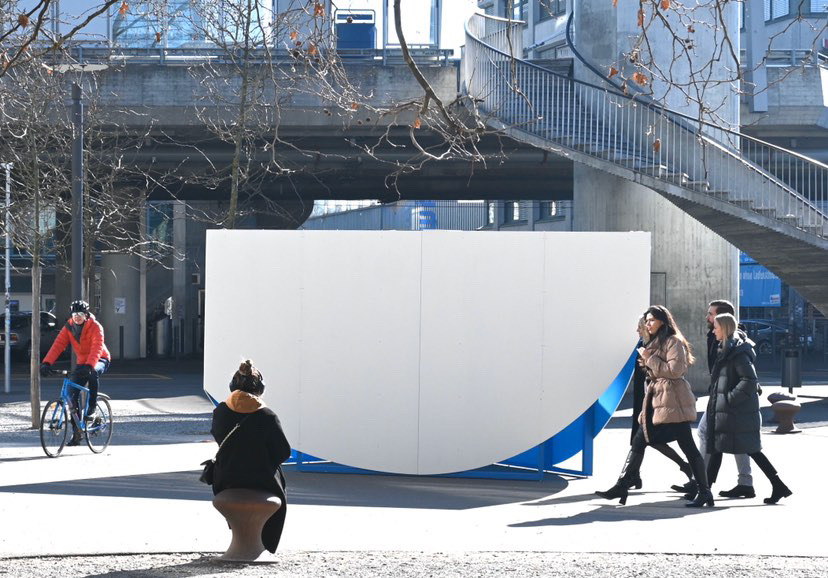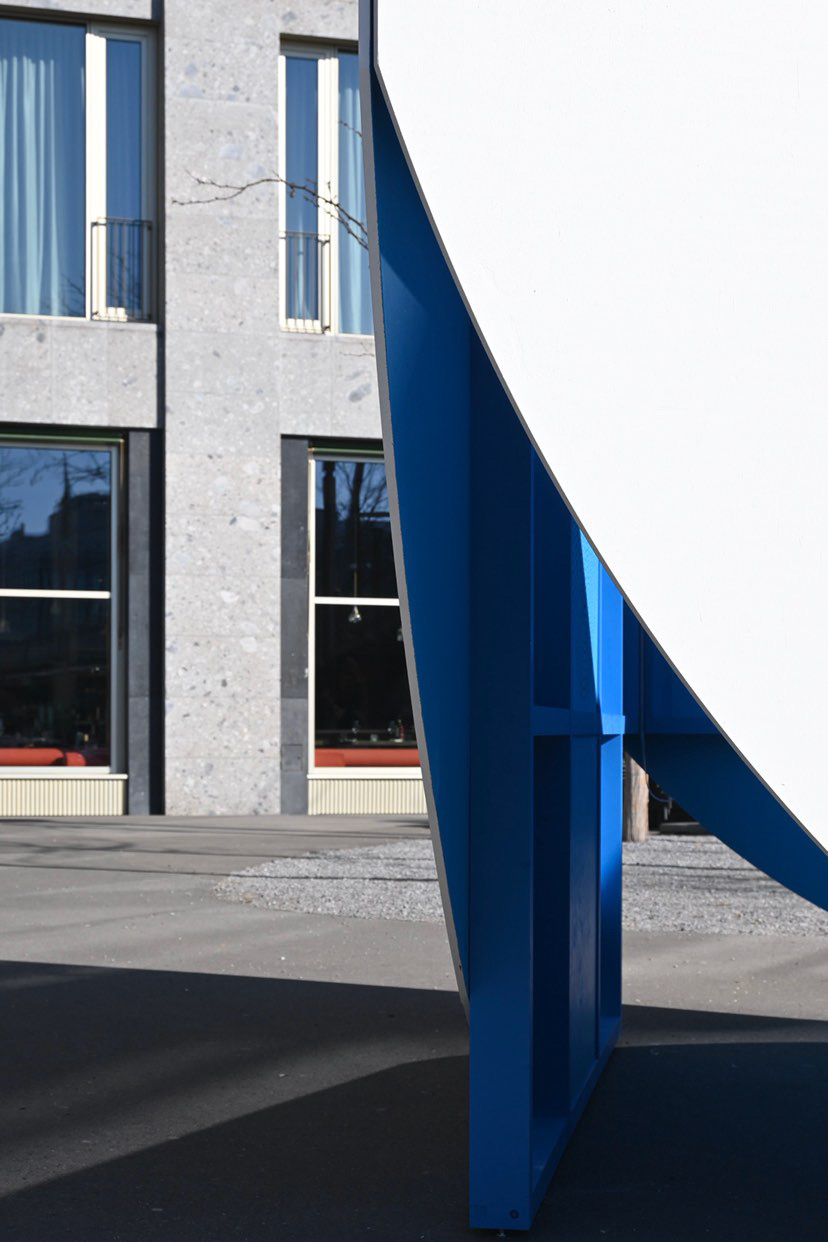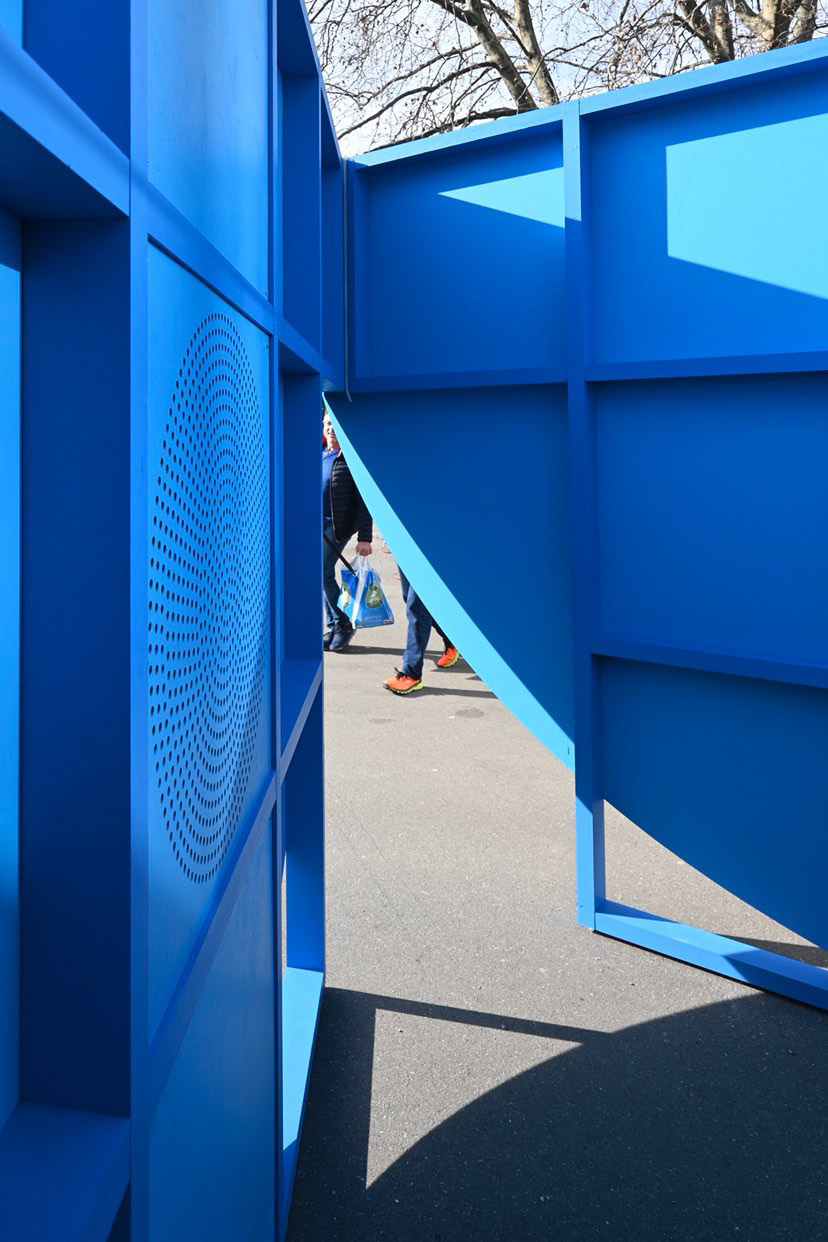‘Encounter Iced Sound,’ a pavilion and interactive sound installation by architecture firm rotative studio and Swiss composer and musician Ramon Landolt, brought the sound of the endangered alpine glaciers to the center of the city of Zürich for a month.
The Zürich-Rotterdam-based architecture practice rotative studio (a collaboration between architects and urban designers Alexandra Sonnemans and Caterina Viguera) was invited by Zürich-based composer and musician Ramon Landolt, to create a pavilion in public space on the occasion of his project ‘Iced Sound’, for which he composed ‘music by and for glaciers’, through field recordings, algorithm processing and performances with various artists in Alpine glacier caves – remote places fully surrounded by ice.
One of the main themes of his project, transformation (or flux), formed an inspiration for and aligned with the focus of the work of the architects. The spatial expression of the pavilion reflects, and makes experienceable, that what we can not see, and in this case, hear; the story of unseen and unheard, fragile, landscapes, that are slowly, gradually, but also ever faster, changing, as a result of our own, human, action(s), which has major consequences for our planet. The pavilion, with its subjective acoustical and visual voice, embodies this tension, as a sonic exploration of the climate crisis.
"The compositions want to make it possible to acoustically experience the natural and climate crisis-induced changes in the landscape in public space"
Iced Sound
Ramon Landolt created a unique sonic experience from different field recordings during several visits in various alpine glaciers between 2019 and 2022 while listening to and interacting with glacier caves and seracs, crevasses, and glacial lakes. Morteratsch-, Zinnal- and Rhone glacier have been visited both in summer and winter to perceive the different sonic environment. Glacial caves are unpredictable entities because they appear during melting processes until winter freezes their current form, only to possibly disappear in spring again. Early hours on the glacier allowed him to capture unique sounds of the cracking ice melting with the sunrise.
In the course of the project it became clear to Landolt that he wanted to establish a conversation with the glacier. ‘I have developed different ways to do so: through written composition played on-site by invited artists, by improvising on-site with the real-time sonic environment and by recording sounds and altering them afterwards.’
On the occasion of his project (Carte Blanche at Moods), Ramon Landolt edited his sound recordings from glacier caves and crevasses, collected over several years, and combined them into a 24-hour loop. The architecture practice rotative studo was then tasked to create an acoustic environment for this. Because before artists and their audiences make a pilgrimage to a real glacier cave and thus encourage questionable tourism, the cave, rather, comes to them. In the middle of the city, it offers a confined space in which to hear this composition, which merges with the beat of urban life and even with the rhythm of public traffic on the bridge.
‘Encounter Iced Sound’
From the outside, the three walls that enclose the empty space are painted white. They seem to balance on their semicircular lower edges. Stooping down, one can slip in under the connecting axles and then find oneself in an ice-blue, sharp-edged construction. A wooden framework, connected only with wooden dowels, provides the grid in which the loudspeakers are integrated and which supports the wall panels. On frosty nights the wood cracks and in sunshine it expands again; the movement in the material adds another acoustic layer to the composition. Daylight falls onto the floor along the round edges and forms circular shadows at certain times of the day. The play of presence and absence, of mass and space, continues in the changing daylight.
The pavilion and its sound installation represents a glacier talking to the city. The sound installation embedded in the facades of the pavilion, interacts with the visitors and the surrounding urban soundscape. During the day, the children of a neighbouring institution use the hideout to play; in the evening, theatre-goers approach and immerse themselves in the triangular interior.
The pavilion as a public room remained on the Zürich central square Schiffbauplatz for a period of four weeks, so the sounds were accessible to all and listeners could approach the topic at their own pace, yet always in a simultaneity of urban and remote alpine sounds.
Surprisingly, the structure, which was accessible at all times, was not affected by vandalism. The architects behind rotative studio describe the building as an experimental object. The experience gained contributes to the development of further demountable buildings with which they readjust existing urban spaces.
More information: https://rotativestudio.com/Encounter-Iced-Sound-2023
Article’s cover:
Encounter Iced Sound by rotative studio © Alex Ochsner
